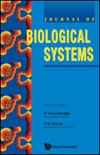癫痫脑连通性估计的统计评价方法
IF 1.5
4区 数学
Q3 BIOLOGY
引用次数: 0
摘要
使用现代方法(如格兰杰因果关系、部分定向相干性和传递熵)的连通性分析总是需要对获得的显著性度量进行额外的统计评估。虽然对于非常简单的线性自回归过程和拟线性振荡活动的理论估计是可用的,但实际的生物信号太复杂,无法应用分析方法和替代数据。当研究像癫痫发作这样的病理活动时,问题也会以一种不同的方式出现:人们会问所研究的活动是否与正常活动不同,而不是是否存在连通性。如果比较睡眠和清醒等不同生理状态下的连通性,同样可以得出类似的问题。在此,我们研究了两种不同的传递熵估计的统计评估方法,用于研究缺失癫痫的主要脑电图表现——峰波放电(SWDs),这是WAG/Rij大鼠(遗传模型)局部场电位的记录。第一种方法是比较基线和病理活动不同阶段的估计量的分布,使用传统的测量方法,如t检验,并对多重检验进行额外的修正。第二种方法是制作代理数据并测试所获得的估计量对于代理序列和真实序列是否不同。为了支持我们的发现并更好地理解方法,使用简单的癫痫活动振荡模型模拟的系列以与实验数据相同的方式进行评估。我们发现,与基线活动相比,在swd期间,额叶和顶叶皮质区域之间的耦合双向增加等最明显的现象被两种方法认为是显著的。但是,当考虑到表达较少的耦合变化时,基于代理数据的方法提供了更少的误报。这些结果证实,虽然连通性估计器的统计评估并不理想,但先前获得的缺失癫痫连通性分析的主要结果(不仅是它)是有效的。本文章由计算机程序翻译,如有差异,请以英文原文为准。
METHODS FOR STATISTICAL EVALUATION OF CONNECTIVITY ESTIMATES IN EPILEPTIC BRAIN
Connectivity analysis using modern approaches like Granger causality, partial directed coherence and transfer entropy always demands additional statistical evaluation of the obtained measures for significance. Although for very simple linear autoregressive processes and quasilinear oscillatory activities theoretical estimates are available, the real biological signals are too complex for application of analytical approaches and surrogate data come into use. When pathological activity like epileptic seizures is studied, the question can also rise in a somewhat different way: one asks whether the studied activity is different from the normal one rather than whether connectivity exists. The similar question is also valid if one compares connectivity in different physiological states like sleep and wakefulness. Here, we study two different approaches to statistical evaluation of transfer entropy estimates in application to the study of spike–wave discharges (SWDs), the main encephalographic manifestation of absence epilepsy, registered in local field potentials of WAG/Rij rats (genetic models). The first approach is to compare distributions of the estimators for the baseline and different stages of pathological activity using traditional measures like t-test with additional corrections for multiple testing. The second approach is to make surrogate data and test whether the achieved estimators differ for surrogate series and for real ones. To support our findings and to understand the methods better, the series simulated using simple oscillatory models of epileptic activity are evaluated in the same way as the experimental data. We show that the most pronounced phenomena like bidirectional increase in coupling between frontal and parietal cortical areas during SWDs in comparison to baseline activity are considered to be significant by both approaches. But when the less expressed coupling changes are under consideration, the approach base on surrogate data provides less false positives. These results confirm that the primary outcomes of connectivity analysis for absence epilepsy (and not only it) achieved previously are valid although the statistical evaluation of the connectivity estimators was suboptimal.
求助全文
通过发布文献求助,成功后即可免费获取论文全文。
去求助
来源期刊
CiteScore
2.80
自引率
12.50%
发文量
31
审稿时长
1 months
期刊介绍:
The Journal of Biological Systems is published quarterly. The goal of the Journal is to promote interdisciplinary approaches in Biology and in Medicine, and the study of biological situations with a variety of tools, including mathematical and general systems methods. The Journal solicits original research papers and survey articles in areas that include (but are not limited to):
Complex systems studies; isomorphies; nonlinear dynamics; entropy; mathematical tools and systems theories with applications in Biology and Medicine.
Interdisciplinary approaches in Biology and Medicine; transfer of methods from one discipline to another; integration of biological levels, from atomic to molecular, macromolecular, cellular, and organic levels; animal biology; plant biology.
Environmental studies; relationships between individuals, populations, communities and ecosystems; bioeconomics, management of renewable resources; hierarchy theory; integration of spatial and time scales.
Evolutionary biology; co-evolutions; genetics and evolution; branching processes and phyllotaxis.
Medical systems; physiology; cardiac modeling; computer models in Medicine; cancer research; epidemiology.
Numerical simulations and computations; numerical study and analysis of biological data.
Epistemology; history of science.
The journal will also publish book reviews.

 求助内容:
求助内容: 应助结果提醒方式:
应助结果提醒方式:


